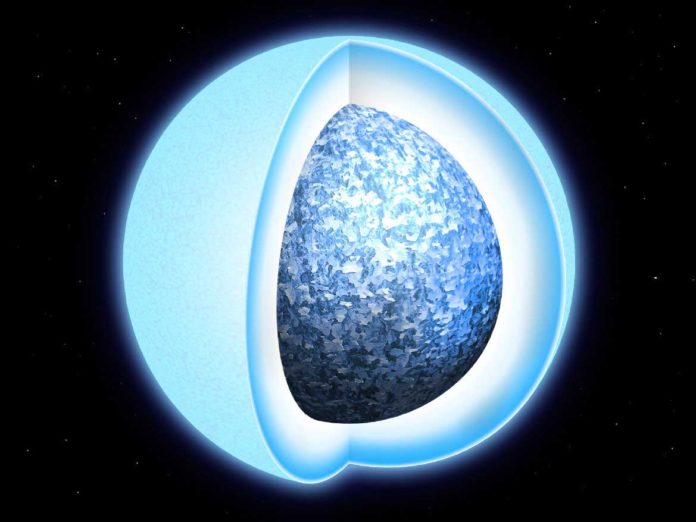Astronomers at the University of Warwick have found the first direct evidence of white dwarf stars solidifying into crystals, and our skies are filled with them.
White dwarf stars are probably the oldest stellar objects in the universe. They are unimaginably valuable to stargazers as their anticipated lifecycle enables them to be utilized as cosmic clocks to gauge the age of groups of neighboring stars to a high level of precision. They are the rest of the centers of red goliaths after these colossal stars have passed on and shed their external layers and are always cooling as they discharge their accumulated warmth through the span of billions of years.
Astronomers chose 15,000 white dwarf candidates within around 300 light-years of Earth from perceptions made by the Gaia satellite and broke down information on the stars’ luminosities and colors.
They distinguished a heap up, an excess in the number of stars at explicit colors and luminosities that don’t compare to any single mass or age. At the point when contrasted with evolutionary models of stars, the pile-up strongly harmonizes with the phase in their advancement in which inert heat is anticipated to be discharged in large amounts, bringing about backing off of their cooling procedure.
It is assessed that, at times, these stars have backed off their maturing by as much as 2 billion years, or 15 percent of the age of our galaxy.
Observations have revealed that dead remnants of stars like our Sun, called white dwarfs, have a core of solid oxygen and carbon due to a phase transition during their lifecycle similar to water turning into ice but at much higher temperatures. This could make them potentially billions of years older than previously thought.
Dr. Pier-Emmanuel Tremblay from the University of Warwick’s Department of Physics said, “This is the first direct evidence that white dwarfs crystallize or transition from liquid to solid. It was predicted fifty years ago that we should observe a pile-up in the number of white dwarfs at certain luminosities and colors due to crystallization, and only now this has been observed.”
“All white dwarfs will crystallize at some point in their evolution, although more massive white dwarfs go through the process sooner. This means that billions of white dwarfs in our galaxy have already completed the process and are essentially crystal spheres in the sky. The Sun itself will become a crystal white dwarf in about 10 billion years.”
Dr. Tremblay adds: “Not only do we have evidence of heat release upon solidification, but considerably more energy release is needed to explain the observations. We believe this is due to the oxygen crystallizing first and then sinking to the core, a process similar to sedimentation on a river bed on Earth. This will push the carbon upwards, and that separation will release gravitational energy.”
“We’ve made a large step forward in getting accurate ages for these cooler white dwarfs and, therefore old stars of the Milky Way. Much of the credit for this discovery is down to the Gaia observations. Thanks to the precise measurements that it is capable of, we have understood the interior of white dwarfs in a way that we never expected. Before Gaia, we had 100-200 white dwarfs with precise distances and luminosities – and now we have 200,000. This experiment on an ultra-dense matter is something that simply cannot be performed in any laboratory on Earth.”
The study is published in the journal Nature.
